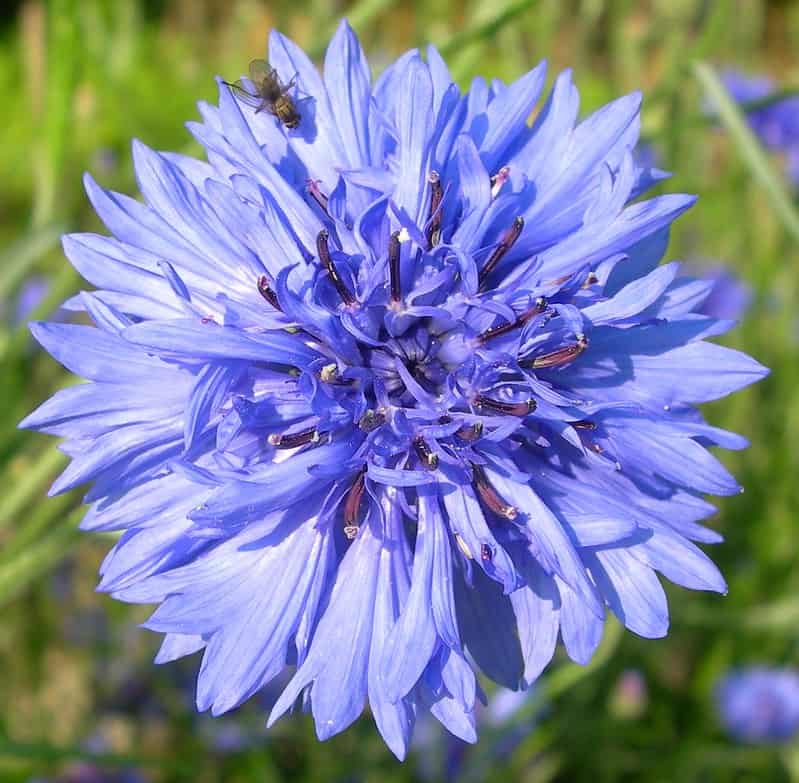Gardeners looking for a true blue color on a flower can’t go wrong with the outdated Bachelor’s Button flower “Cornflower”. These completely double annual flowers look like miniature carnations, only they are much easier to grow.
In fact, they are treated as weeds in some areas, due to their propensity for self-injection. However, every gardener needs at least one plant that cannot fail in the flower garden, and this slightly fragrant flower belongs to every beginner’s landscape.
Botanical Name Centaurea cyanus
Common Name Bachelor’s Buttons
Plant Type Annual
Mature Size 12–36 inches
Sun Exposure Part to full sun
Soil Type Well-draining
Soil pH Alkaline
Bloom Time Summer
Flower Color Blue, purple, pink, or white
Hardiness Zones 2–11
Native Area Europe
Are Bachelor Buttons Right for Your Garden?
The plants Centaurea cyanus have been cultivated for centuries and have collected many nicknames along the way, such as the Bachelor Button, Basket Flower, Blue Bonnet, Blue Bottle, Blue Bow, Blue Cap, Cornflower, Boutonniere Flower, and Hurt Sickle.
The fast-growing flowers will reach a height of about 30 inches and a spread of 10 inches in all growing areas, given a bright spot in full sun.
Bachelor’s buds flower from mid-summer to the first frost, but when wilted they spread and increase flowering. They are great dry flowers if you cut the flowers before the frost bites them.
How to Plant Bachelor’s Buttons
You can buy packages of 200 bachelor’s button seeds for less than five dollars, making this a great flower option for frugal gardeners.
Even if you are not used to growing plants from seeds, you have a high probability of success starting with a cornflower seed.
Sow later in late winter or after the first frost directly in the garden.
Don’t worry too much about planting too early; Mother nature will tell the seeds when to sprout. Provide a well-drained medium garden soil. Keep the seedbed moist until germination occurs, usually within 10 days at warm temperatures.
Cornflowers can tolerate some crowding, but thinning seedlings increase flowering and vigor in plants.
Care and maintenance of Bachelor’s Button “Cornflower”
The bachelor buttons are as easy to maintain as they are to start. Give them the equivalent of one inch of water per week, especially in the hottest months of July and August.
Re-plant plants if they collapse, which is generally more of a problem in shady gardens.
Alternatively, you can grow them among other hardy perennials as coneflowers that will act as natural supports for the stems.
Fertilize your bachelor’s buttons monthly with compost or compost tea if your soil is poor.
At the end of the season, collect the brown seed pods to plant in other areas or to share with friends.
Expect more bachelor button flowers at the same site next year as they are volunteering.
Garden Design Tips With Bachelor Buttons
Bachelor’s buttons are edible flowers, so you can include them in the garden to make salads, some describe their taste as sweet or cucumber.
Bachelor’s buttons also have a long tradition in herbs and natural medicines as anti-inflammatory, so you can include them in the herb garden.
As ornamentals, bachelor buds look pretty in wildflower gardens, and their bright blue flowers are welcome in the cut garden.
Combine blue cornflowers with opposite annuals on the color wheel, such as the orange cosmos or yellow marigolds, to make both flowers stand out in the flower garden.
Suggested varieties to try
Most people are drawn to the vibrant blue of the bachelor buttons, but why not explore other options with this simple annual?
Blue Boy: a vivid blue periwinkle
Tall Double Mixed Colors: shades of white, pink and blue
Black Ball – A rare strain with deep crimson knobs
